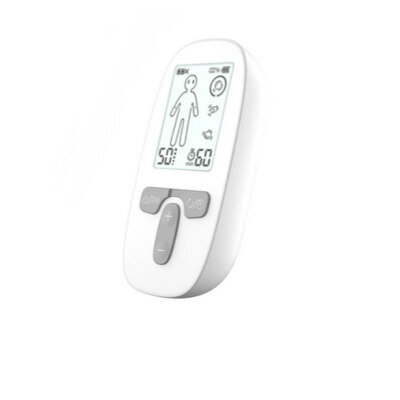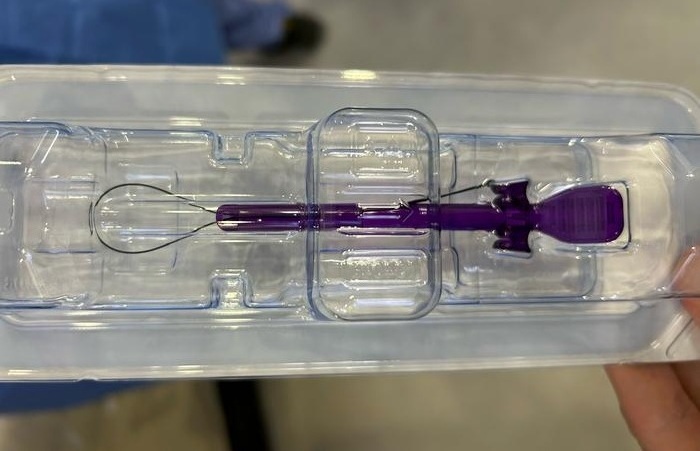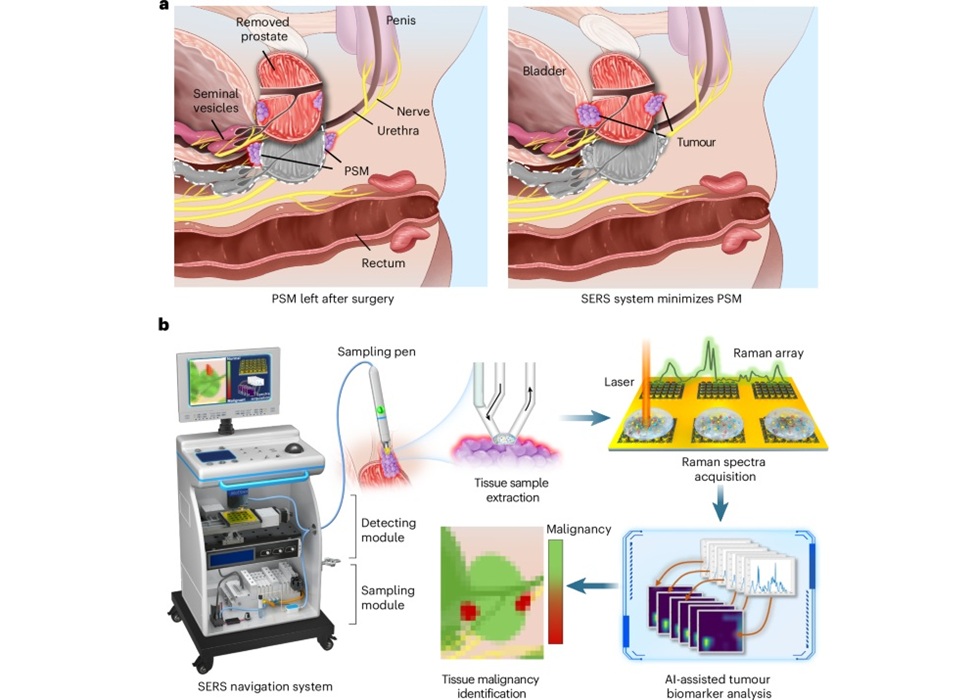Viewers Cautioned on Televised Medical Talk Show Recommendations
|
By HospiMedica International staff writers Posted on 05 Jan 2015 |

Image: Study authors Mike Kolber, Christina Korownyck, and Mike Allan (Photo courtesy of the University of Alberta).
A new study warns that the public should be skeptical of recommendations made on mainstream television medical talk shows, as they often lack adequate evidence or are contradicted by the best available evidence.
Researchers at the University of Alberta (Edmonton, Canada) chose two internationally syndicated medical talk shows to analyze: The Dr. Oz Show and The Doctors. Each show was recorded every day from January 2013 to April 2013. The researchers then randomly selected 40 episodes of each show and had two team members watch every episode independently, recording topics, recommendations made, and who was making the recommendations. Two other researchers also watched the episodes and review the recommendations, focusing on benefits mentioned, if the magnitude of the benefit was quantified, costs, and conflict of interest.
The researchers found evidence to support 54% of the 160 randomly selected recommendations (80 from each show). For The Dr. Oz Show, evidence supported 46%, contradicted 15%, and was not found for 39%. For The Doctors, evidence supported 63%, contradicted 14%, and was not found for 24%. Believable or somewhat believable evidence supported 33% of the recommendations on The Dr. Oz Show and 53% on The Doctors. The most common recommendation category on The Dr. Oz Show was dietary advice (39%) and on The Doctors was to consult a healthcare provider (18%).
Further findings included a specific benefit for 43% and 41% of the recommendations made on the shows respectively. The magnitude of benefit was described for 17% of the recommendations on The Dr. Oz Show and 11% on The Doctors. Disclosure of potential conflicts of interest accompanied only 0.4% of recommendations for both shows. The study was published in the Christmas edition of the British Medical Journal (BMJ), which was dedicated to media studies.
“Some patients come in and say 'I heard on Dr. Oz yesterday that we should all be doing this.' And then we're left scrambling in our office to try to find answers. It got us reflecting, what's being said there? What kinds of things are being recommended and what kind of information is being provided?” said lead author Christina Korownyk, MD, an associate professor in the department of family medicine. “Frequently you're not getting enough information and without doing the research you won't know if it's supported by evidence or not; the research supporting any of these recommendations is frequently absent, contradictory, or of poor quality.”
Related Links:
University of Alberta
Researchers at the University of Alberta (Edmonton, Canada) chose two internationally syndicated medical talk shows to analyze: The Dr. Oz Show and The Doctors. Each show was recorded every day from January 2013 to April 2013. The researchers then randomly selected 40 episodes of each show and had two team members watch every episode independently, recording topics, recommendations made, and who was making the recommendations. Two other researchers also watched the episodes and review the recommendations, focusing on benefits mentioned, if the magnitude of the benefit was quantified, costs, and conflict of interest.
The researchers found evidence to support 54% of the 160 randomly selected recommendations (80 from each show). For The Dr. Oz Show, evidence supported 46%, contradicted 15%, and was not found for 39%. For The Doctors, evidence supported 63%, contradicted 14%, and was not found for 24%. Believable or somewhat believable evidence supported 33% of the recommendations on The Dr. Oz Show and 53% on The Doctors. The most common recommendation category on The Dr. Oz Show was dietary advice (39%) and on The Doctors was to consult a healthcare provider (18%).
Further findings included a specific benefit for 43% and 41% of the recommendations made on the shows respectively. The magnitude of benefit was described for 17% of the recommendations on The Dr. Oz Show and 11% on The Doctors. Disclosure of potential conflicts of interest accompanied only 0.4% of recommendations for both shows. The study was published in the Christmas edition of the British Medical Journal (BMJ), which was dedicated to media studies.
“Some patients come in and say 'I heard on Dr. Oz yesterday that we should all be doing this.' And then we're left scrambling in our office to try to find answers. It got us reflecting, what's being said there? What kinds of things are being recommended and what kind of information is being provided?” said lead author Christina Korownyk, MD, an associate professor in the department of family medicine. “Frequently you're not getting enough information and without doing the research you won't know if it's supported by evidence or not; the research supporting any of these recommendations is frequently absent, contradictory, or of poor quality.”
Related Links:
University of Alberta
Channels
Critical Care
view channel
Nasal Drops Fight Brain Tumors Noninvasively
Glioblastoma is one of the most aggressive and fatal brain cancers, progressing rapidly and leaving patients with very limited treatment options. A major challenge has been delivering effective therapies... Read more
AI Helps Optimize Therapy Selection and Dosing for Septic Shock
Septic shock is a life-threatening complication of sepsis and remains a leading cause of hospital deaths worldwide. Patients experience dangerously low blood pressure that can rapidly lead to organ failure,... Read more
Glowing Bacteria ‘Pills’ for Detecting Gut Diseases Could Eliminate Colonoscopies
Diagnosing gastrointestinal diseases such as colitis and colorectal cancer often relies on colonoscopy, an invasive procedure that many patients avoid despite ongoing symptoms like bleeding, cramping, and diarrhoea.... Read moreSurgical Techniques
view channelNovel Endoscopy Technique Provides Access to Deep Lung Tumors
Detecting lung cancer early can save lives, but diagnosing small tumors deep in the outer regions of the lungs remains a major clinical challenge. Although CT scans frequently identify tiny suspicious... Read more
New Study Findings Could Halve Number of Stent Procedures
When a coronary artery becomes acutely blocked during a heart attack, opening it immediately is essential to prevent irreversible damage. However, many patients also have other narrowed vessels that appear... Read morePatient Care
view channel
Revolutionary Automatic IV-Line Flushing Device to Enhance Infusion Care
More than 80% of in-hospital patients receive intravenous (IV) therapy. Every dose of IV medicine delivered in a small volume (<250 mL) infusion bag should be followed by subsequent flushing to ensure... Read more
VR Training Tool Combats Contamination of Portable Medical Equipment
Healthcare-associated infections (HAIs) impact one in every 31 patients, cause nearly 100,000 deaths each year, and cost USD 28.4 billion in direct medical expenses. Notably, up to 75% of these infections... Read more
Portable Biosensor Platform to Reduce Hospital-Acquired Infections
Approximately 4 million patients in the European Union acquire healthcare-associated infections (HAIs) or nosocomial infections each year, with around 37,000 deaths directly resulting from these infections,... Read moreFirst-Of-Its-Kind Portable Germicidal Light Technology Disinfects High-Touch Clinical Surfaces in Seconds
Reducing healthcare-acquired infections (HAIs) remains a pressing issue within global healthcare systems. In the United States alone, 1.7 million patients contract HAIs annually, leading to approximately... Read moreBusiness
view channel
Philips and Masimo Partner to Advance Patient Monitoring Measurement Technologies
Royal Philips (Amsterdam, Netherlands) and Masimo (Irvine, California, USA) have renewed their multi-year strategic collaboration, combining Philips’ expertise in patient monitoring with Masimo’s noninvasive... Read more
B. Braun Acquires Digital Microsurgery Company True Digital Surgery
The high-end microsurgery market in neurosurgery, spine, and ENT is undergoing a significant transformation. Traditional analog microscopes are giving way to digital exoscopes, which provide improved visualization,... Read more
CMEF 2025 to Promote Holistic and High-Quality Development of Medical and Health Industry
The 92nd China International Medical Equipment Fair (CMEF 2025) Autumn Exhibition is scheduled to be held from September 26 to 29 at the China Import and Export Fair Complex (Canton Fair Complex) in Guangzhou.... Read more














